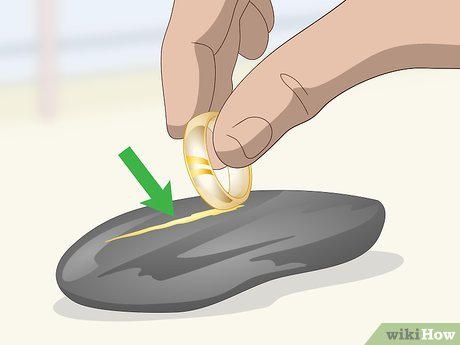Easy Ways to Test Gold Purity at Home
This article outlines simple and effective methods to test the purity of gold in the comfort of your own home.

Understanding Gold Karats
Before learning about the easy ways to test gold purity at home, it is crucial to understand gold karats. Karat is the unit used to measure the purity of gold. Pure gold is 24 karats, but it is too soft to be used in jewelry or other items. Therefore, gold is mixed with other metals to make it more durable.
The most common gold karats are 10k, 14k, 18k, and 22k. The higher the karat, the more gold it contains. For example, 18k gold contains 75% gold, while 14k gold has 58.5% gold.
It is essential to understand gold karats when testing for purity because different karats require different testing methods. For instance, 10k gold will not react the same way as 18k gold when exposed to certain chemicals.

Acid Testing for Gold Purity
One of the most common methods to test gold purity is through acid testing. This method involves using a testing kit that contains a set of solutions with varying levels of acidity. A small scratch is made on the gold surface, and each solution is applied to the scratch. The reaction of the solution with the gold will determine its purity level.
The acid test works by analyzing the amount of alloys present in the gold. Pure gold is resistant to acid and will not change color or dissolve. However, if the gold contains other metals, such as silver or copper, the acid will react with those metals, causing the gold to change color or dissolve.
The acid test is relatively easy to conduct at home, but it requires some caution. It is important to follow the instructions on the testing kit carefully and to wear protective gloves and goggles. It is also recommended to test a small inconspicuous part of the gold item to avoid damaging it.

Electronic Gold Testing
Using electronic gold testing devices is an easy and reliable way to test the purity of your gold at home. These devices work by measuring the electrical conductivity of the metal, which varies depending on its purity level.
To use an electronic gold tester, you will need to place your gold item on a testing plate and apply a small amount of testing solution to it. The device will then analyze the metal and display its purity level on a screen.
One of the advantages of electronic gold testing is that it provides accurate results in just a few seconds, and it can be used on a wide range of gold items, including coins, bars, and jewelry.
However, it's important to note that electronic gold testing devices can be expensive, and they may require regular calibration to ensure accurate results. Additionally, they may not be as reliable as other testing methods when it comes to identifying gold-plated items or those with non-standard alloys.
Magnet Test for Gold Purity
One of the easiest and most reliable ways to test the purity of gold at home is the magnet test. This test is based on the fact that gold is not magnetic, so if a magnet is attracted to your gold, it is not pure.
To perform this test, simply place a magnet near your gold item. If the magnet is attracted to it, the gold is not pure. However, if the magnet does not attract the gold, it is likely that the gold is pure.
It is important to note that this test is not always foolproof, as some non-gold metals are also not magnetic. Additionally, if your gold item is plated with a magnetic metal, it may still attract the magnet.
If you want to ensure the accuracy of your gold purity test, it is recommended that you use multiple methods to verify the results. However, the magnet test is a quick and easy way to get a general idea of the purity of your gold.
How to Interpret Test Results
| Test Result | Interpretation |
|---|---|
| 14K | The gold is 58.3% pure, which is a lower purity level. |
| 18K | The gold is 75% pure, which is a medium purity level. |
| 22K | The gold is 91.7% pure, which is a high purity level. |
| 24K | The gold is 99.9% pure, which is the highest purity level. |
Precautions When Testing Gold Purity at Home
While testing the purity of gold at home can be a cost-effective way to determine the quality of your jewelry or coins, it's important to take certain precautions to ensure accurate results and your safety. Here are some essential precautions to follow:
1. Use protective gear: Wear gloves and goggles to protect your hands and eyes from any potential hazards.
2. Test a small sample: It's important to test only a small portion of your gold item to avoid damage. You can use a file or sandpaper to create a small scratch on the surface.
3. Use reliable testing methods: There are various methods to test gold purity at home, including acid tests, electronic testers, and magnet tests. Make sure to use a reliable testing method and follow the instructions carefully.
4. Keep your testing area clean: To avoid cross-contamination or incorrect readings, make sure to keep your testing area clean and free from any debris or other metals.
5. Dispose of chemicals properly: If you're using acid testing, make sure to dispose of the chemicals properly and carefully. Follow the instructions on the package and avoid pouring the solution down the drain.
By following these precautions, you can ensure accurate and safe testing of your gold items at home.
Gold IRA: Should You Open One To Save For Retirement?

